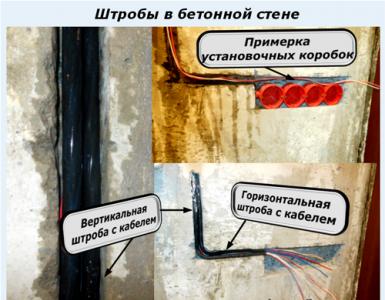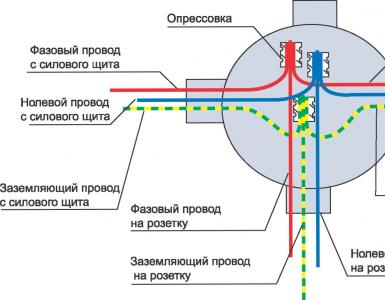How to choose electric heating convectors: what to look for before buying + brand overview
When choosing a home heating system, it is important to choose the right devices that quickly and efficiently heat the air in the premises. Modern electric heating convectors are devices aimed at maintaining a comfortable temperature in a house or apartment.
They greatly facilitate the work of traditional heating systems, and in certain cases can even completely replace them.
The operation of the device is based on the convection process associated with a known physical phenomenon: when heated, the air density decreases, as a result of which it expands and rises.
The name convector comes from the Latin convectio - "transfer". The process consists of a constant movement of air flows: the cold one settles down, and the warm one rises to the ceiling.
The design of all types of electric convectors is extremely elementary. The main parts of the device are the body and the heating unit, located in the lower part of the casing.
Cold air enters the holes, which are located at the bottom of the device. When passing next to the heater, the temperature of the air flow rises, due to which it rushes upwards, where there are outlet holes made at a slight slope.
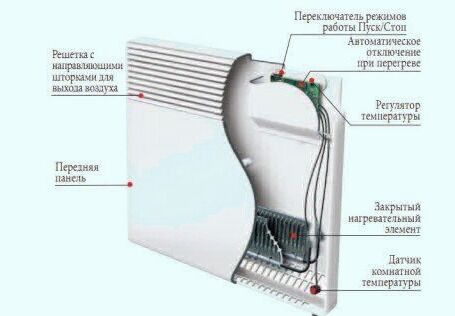
In addition to the main elements, modern convector models also have many additional elements (overheating sensor, thermostat) that ensure comfortable operation.
Warm gas rises to the ceiling, and then, gradually cooling, is nailed to the floor again, after which the process steps are repeated again. The constant movement of the air mass allows you to efficiently and evenly heat the room.
Strengths and weaknesses of electric convectors
The devices have their advantages and disadvantages. The popularity of such devices is due to their numerous advantages:
- Ease of installation and operation. The devices do not require special preparation for operation or additional assembly operations. It is enough just to release the convector from the box and plug the device into the network.
- High space heating rate. The device quickly reaches the required power, since it does not have to spend energy to heat the coolant.
- Durability. Although the warranty period of convectors from well-known companies is on average 5 years, in practice they can work flawlessly for 10-25 years.
- High efficiency. Electrical appliances have the highest efficiency among heating appliances. For new generation models, this figure can reach up to 98%.
- Mobility. Devices can be easily carried around the apartment, installing them anywhere where there is access to a power outlet. There are also models on wheels and options that provide the possibility of mounting on the walls.
- Affordable cost. Prices for electric convectors are quite budgetary. In addition, such devices do not require maintenance (removal of fuel residues, cleaning of parts), which also contributes to cost savings.
- Safety. Heating devices do not negatively affect the microclimate of the room: they do not need oxygen for their operation, they do not dry the air. The temperature of the outer shell of the devices does not rise above + 40-60 ° C, so when using them, you can not be afraid of burns.
- Temperature control capability. Modern models often have a special heating regulator, thanks to which it is possible to maintain the most comfortable temperature in the room, preventing its excessive increase.
- Various setting modes. Most of the convectors are equipped with electronic control, thanks to which you can set a specific air heating program.
In addition to a large number of advantages, the devices have some disadvantages. You should know that a stable supply of electricity is necessary for the operation of convectors. In addition, there should be an outlet within reach, as experts recommend avoiding the use of extension cords.
Such devices consume a sufficiently large amount of electric current, which, given the high cost of this resource, can become a problem.
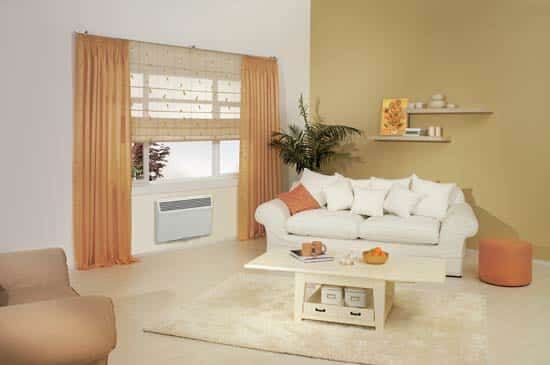
Most models of convectors work completely silently. Only a few devices may make slight crackling or clicking noises during operation.
At the same time, the high cost of electricity consumed is to a certain extent offset by the use of a special economical mode, which is provided in many models, as well as by programming the device to turn off at certain hours.
What to look for when choosing a device
The problem of how to choose the best electric heating convector is quite acute, since dozens of similar models are presented in specialized stores. The following specifications are of particular importance.
Heating element type
Convectors use different types of heating devices. The main ones are tubular, needle-shaped and monolithic.
Needle. The heating element of devices of this class is a thin plate made of a dielectric with a chromium-nickel heating wire placed on it. For insulation, a metal thread that forms loops on both sides is varnished on top.
Designs with such a device have a low cost, but are not very reliable, since the chromium-nickel element is characterized by instantaneous rapid heating and cooling. In addition, the intended type of insulation does not guarantee good protection against water splashes, which is why these devices are not recommended for use in bathrooms.
Tubular heating element (TEH). The most common models are characterized by the use of a steel tube, where a nichrome thread passes surrounded by a heat-conducting insulating material. The aluminum fins on the heating element enhance convection for efficient heat transfer.
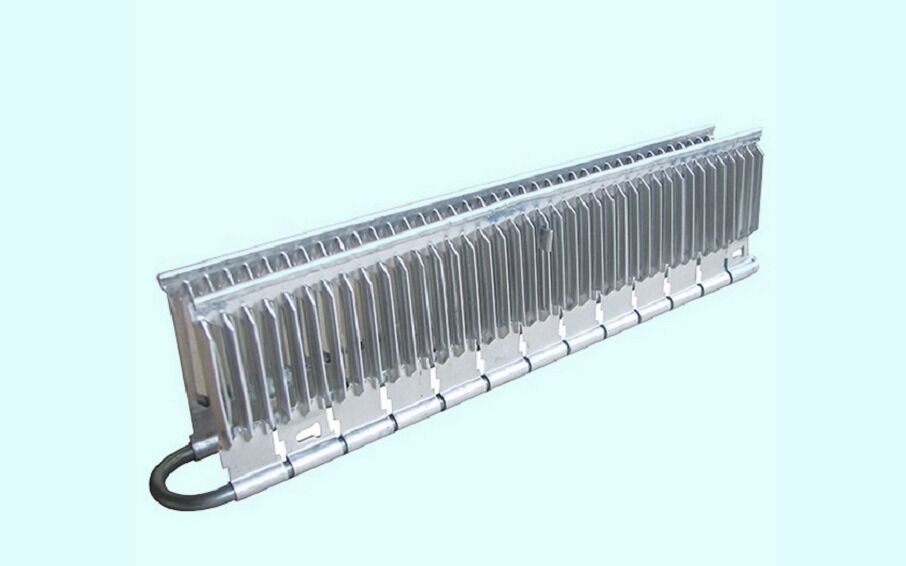
The tubular heating element can be open or closed. Protected heating elements are stronger and more durable, they are well suited for use in wet areas
Convectors with heating elements have better technical characteristics than needle counterparts: the former are less exposed to heat, due to which they are durable. Many devices have effective moisture protection, which allows them to be used in bathrooms. The disadvantages include cracking, which can occur due to different indicators of thermal expansion of parts made from metals of different types.
Monolithic a heating element. Blocks of a new generation, the action of which is due to the heating of a solid base. Thanks to this detail, the devices are distinguished by silent operation and high efficiency.
Power of electric convectors
The main characteristic on which the amount of heat produced by the convector depends is its power. When choosing a device, it must be borne in mind that 1 kilowatt is designed for heating a room of 10-12 m 2 (with a standard wall height of 2.7 meters), where there are no other sources of heating. If there is centralized heating, this power will be enough to heat twice the area, that is, 20-24 m 2.
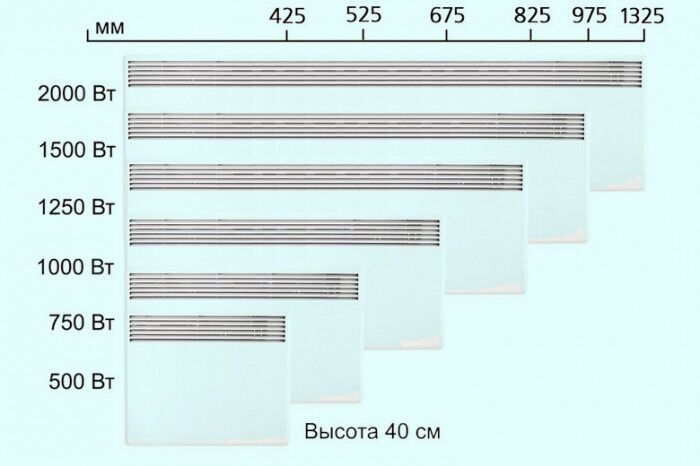
The power of convectors to a certain extent depends on their size. As a rule, large models demonstrate the highest rate. At the same time, other characteristics also affect the heat transfer of devices, primarily the type of heating element.
To correctly calculate the power, a number of other factors should also be taken into account. With the same area of intensive heating, they will require:
- rooms with a large number of windows;
- rooms located in the corners and ends of the building;
- apartments located above the basement.
When choosing a convector, you should also consider which room the device is intended for. For example, for a kitchen, a device with a lower power rating is enough than is required for a bedroom of the same size.
Instrument size and configuration
In the lines of manufacturers, models are presented that have a variety of dimensions: the height of miniature options starts from 15 cm, while the largest convectors can reach 2-3 meters.
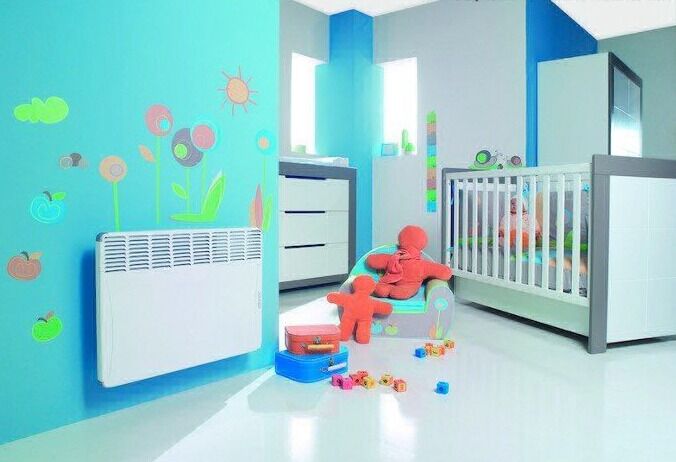
Some models of electric convectors are specially designed for children's rooms. They have an ergonomic design with rounded corners and maximum safety.
The collections include devices of various shapes, in addition to the usual rectangular and square models, you can find round, oval and other non-standard options.
Varieties of mounting methods
There are several types of electric convectors according to the way they are used indoors.
Mobile and built-in (stationary). Mobile appliances are easily carried around the room within reach of the cord. For ease of movement, models of this type are often equipped with wheels.
Embedded- these are variants of convectors that are mounted in the walls. A variation of this category are floor built-in options used for laying the "warm floor" system. All work on the installation of such devices must be carried out by qualified specialists.
Wall (suspended) also refer to stationary. They are fixed on the walls with the help of special connecting elements.
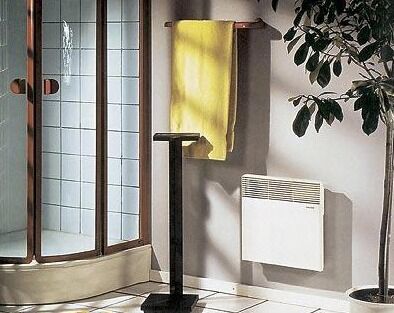
Universal - devices that allow both installation on the floor and hanging on vertical surfaces, that is, they are inherently mobile.
Instrument control principle
Electric convectors are often equipped with power regulators that allow you to set the degree of heating of the room, which eliminates unnecessary electricity consumption.
Modern devices may also have special blocks for programming settings for a long period with an increase or decrease in temperature at certain hours. Such models are more expensive, but they reduce energy consumption.
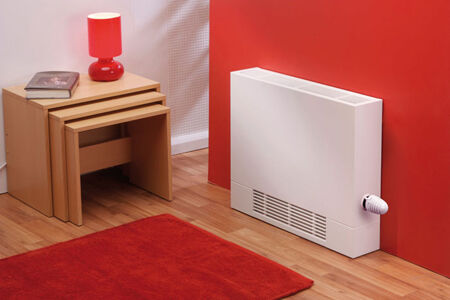
Electric convectors can be equipped with two types of thermostats. Mechanical require manual setting of the required temperature, electronic - allow you to use the automatic mode
There are also devices whose settings can be changed using the remote control. In this case, you can control the operation of the device, which is located, for example, in a children's room, from afar.
Special and additional features
Almost all models of modern heating devices have special overheating sensors. When the maximum temperature is reached, the device switches off. The further algorithm of actions for different options may be different. Some convectors automatically turn on after cooling, while others can only be turned on manually.
Mobile devices may have rollover sensor. If accidentally dropped, the device will automatically stop functioning. Such a mechanism is especially in demand if there are pets or small children in the house.
Some models have a sensor that provides frost protection for walls. Such a function is especially in demand if the device is planned to be used in countries with a harsh climate and in premises for non-permanent residence.
A useful device might be timer to turn off, thanks to which the device will automatically turn off at the selected hour.
Modern convectors often have display, where the mode and the set air temperature are indicated. Such a device contributes to convenient control over the operation of the device.
Safety rules when using CI
All types of electrical appliances require compliance with certain safety rules. There are some restrictions on the use of convectors.
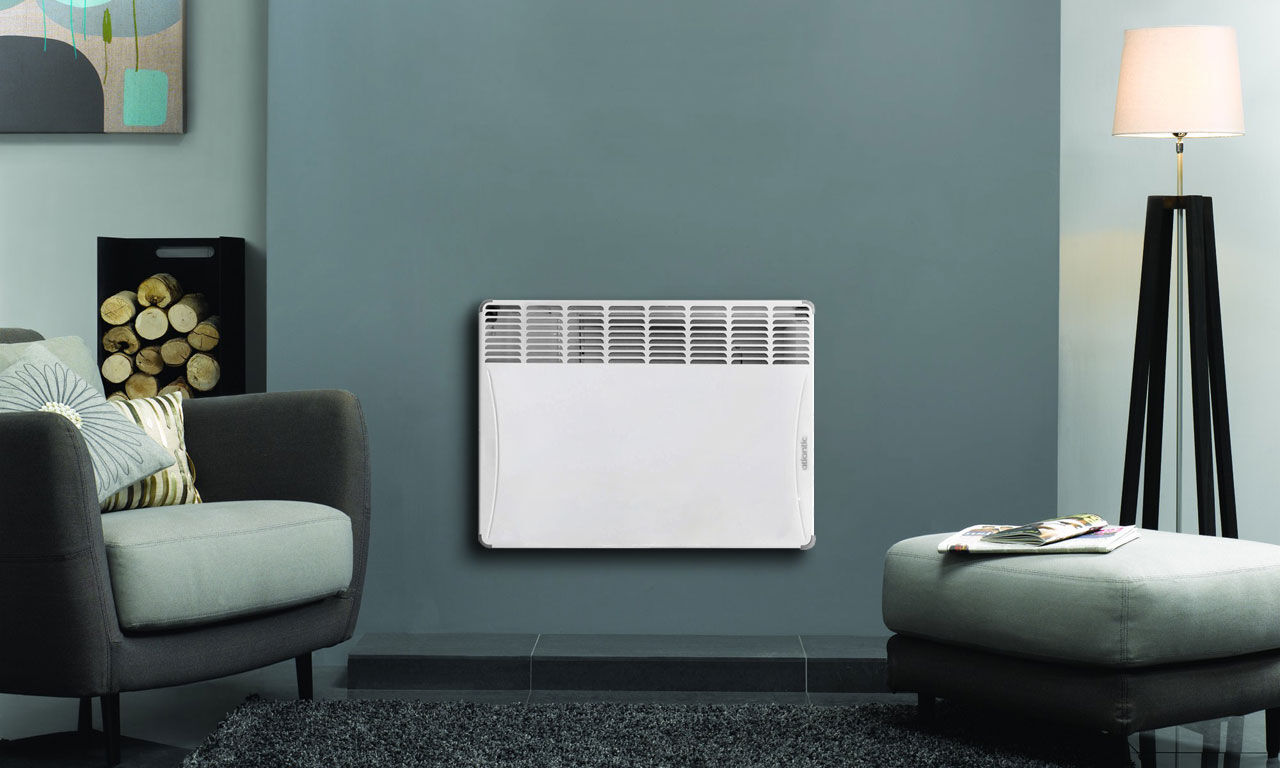
If the electrical wiring is in good condition, heating convectors can be left unattended for a while, especially if the models are equipped with overheating sensors
Safety regulations:
- Under no circumstances should the appliance be covered or used as a clothes dryer.
- It is not recommended to place the convector next to an electrical socket: the minimum distance at which the device must be located is 0.8 m.
- For rooms with a high content of water vapor, device models with the IP 24 marking, indicating a high degree of moisture protection, are suitable.
In general, modern devices have a high level of reliability and fire safety.
In addition to objective indicators, when choosing, personal preferences and specific requirements must also be taken into account.
If you have a limited budget, pay attention to convectors equipped with mechanical thermostats. Although they have fewer features than automatic devices, they are much less expensive, and you don't have to deal with programming instructions.
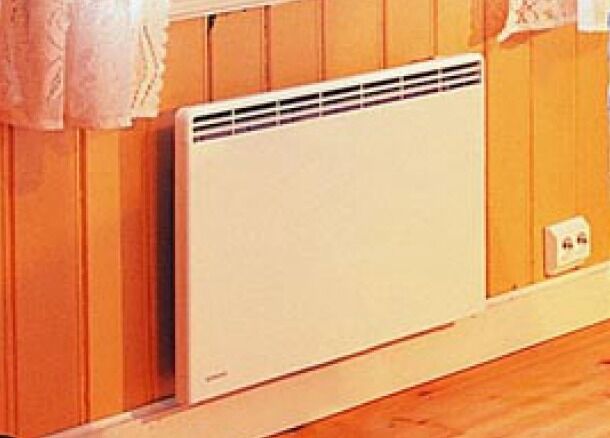
Each convector panel must be self-powered, while the cable cross-section is determined by the power consumption (up to 1.5 kW this value is 1.5 sq. mm, over 2.5 sq. mm)
In the lines of manufacturers, models of various characteristics and price are presented. In order not to overpay, carefully study them and compare them with your requirements. So, for example, to heat a small room, you should not buy an overly powerful device.
If a model with many settings and high technical specifications is sold at a cheap price, you should find out the reliability of the manufacturer and carefully read the documents so as not to purchase a fake.
Overview of popular brands
Models of electric convectors are produced by manufacturers from different countries in Europe, Asia, and America. To name just a few of them:
- Arbonia. Swiss-German company producing steel pipes, heating radiators, heated towel rails and convectors. The company's product range is extremely extensive, while almost all products can be purchased in Russia. The proposed models of convectors are very diverse: they have different shapes, colors and sizes. The company also accepts orders for non-standard products, such as corner appliances.
- Buderus. The German brand, now part of the Robert Bosch GmbH concern, originated in the first half of the 18th century. Initially, the company produced cast-iron elements for the construction of hearths, and since the beginning of the 20th century, it has been engaged in the production of heating appliances, including those operating on electric current. The company manufactures high-quality high-quality convectors that combine high technical characteristics and attractive appearance. In 2012, the company was awarded the Red Dot Award for excellence in design.
- Kermi. The start of production of this German company dates back to 1960. The company produces various types of products, including shower cabins and heating equipment, but it is the convectors, which are widely represented in Russian stores, that are the hallmark of the company.
- Purmo. The company, founded in the Finnish town of the same name, since the late 1950s has been engaged in the production of heating appliances that can withstand the cold climate of the northern country. In the early 1970s, after the company became part of the Rettig concern, production was significantly modernized and automated. Now the company's products are known all over the world: they are exported not only to European countries, but also to other continents.
- Zehnder. The Swiss company, established at the end of the 19th century, specializes in the production of luxury products. Its assortment includes heated towel rails, radiators and convectors of various types (ceiling, floor, wall), which have a truly "cosmic" design. In addition to serial products, the company is engaged in the manufacture of models to order, taking into account the individual requirements of customers.
In addition to the above companies, convectors of the French company Noirot, Norwegian Nobo, German Stiebel Eltron, Roda and other enterprises are popular.
Rating of electric convectors for heating
Participants of specialized forums made a rating of electrical appliances, taking into account the main parameters and features of operation.
Electrolux ECH/AG-1500EF
A budget mobile model from a Swedish manufacturer, which attracts with its high efficiency and speed of reaching the operating temperature.

A quality convector model from Electrolux allows you to reach operating temperature in just 80 seconds, effectively heating an average-sized room
The advantages also include a system of protective screens and the absence of air drying. The disadvantages of the device include a simple design and a small heating area.
Timberk TEC PS1 LE 1500 IN
A convenient high-quality device manufactured by a well-known international holding, whose subdivisions are located in Europe and Asia. The inexpensive mobile model on wheels has two heating modes (one of them is economical), high technical characteristics, as well as many additional functions.
- large area heating element;
- high-precision electronic thermostat;
- on/off timer;
- the ability to connect accessories;
- air ionizer.
The shortcomings noticed by consumers are inexpressive, according to some, design and sound effects (clicks) that are heard when the device is turned on and off.
Noirot Spot E-3 1000
The wall-mounted convector made in France has a pleasant design, affordable price, high efficiency, and a wide range of settings. The device has protection against overheating, a large amount of memory that allows you to restore the settings in the event of a sudden power outage, as well as a special system that counteracts power surges in the network.
Among the weaknesses were noted tight mode switch and not too long cord.
Nobo C4F 20 XSC
Wall model from the Norwegian manufacturer. It has instant heating, is able to heat large areas, which will please the owners of large rooms. The device, which has a nice design, has an overheating protection sensor, mechanical regulation of parameters with the ability to set the exact temperature, and ergonomic mounts that allow the device to be tilted.
The convector has almost no drawbacks, except for the price, which is quite high.
Scoole SC HT HM1 1000W
Electric portable convector made in Norway has an attractive design. A small model at a budget price is a fairly powerful device that can instantly heat a medium-sized room.
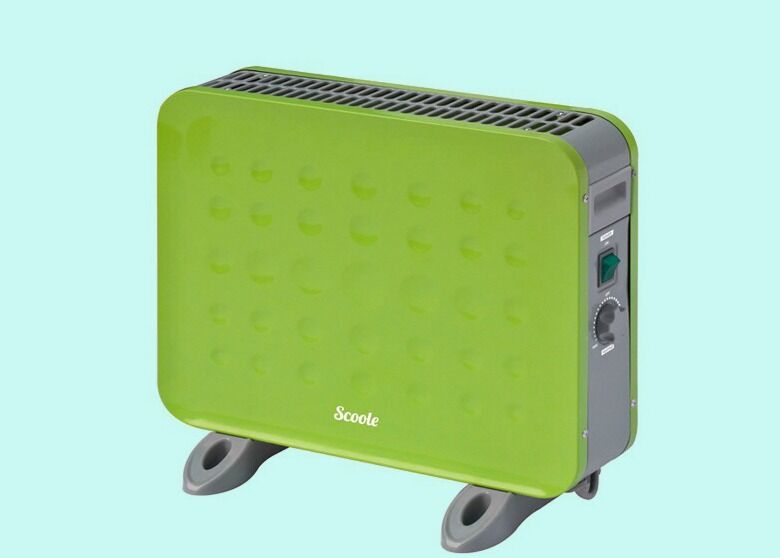
The Scoole mobile model is distinguished not only by its bright color, but also by its good performance. The mikathermic heating element guarantees sufficient power and high heating speed, and the mechanical thermostat features precise control.
The disadvantages include significant power consumption, which increases operating costs.
Ballu ENZO BEC/EZMR 2000
The Russian-made model with a monolithic heater has a democratic cost, but at the same time it has high technical characteristics. The convector, capable of quickly heating a room of 21-25 square meters, has an electronic thermostat, two modes of heat transfer, one of which saves electric current, protection against overheating and overturning.
There are also two options for mounting (the kit includes fasteners for wall fixing and wheels for floor use), a control unit with backlight and a temperature step of 1 degree. Important pluses are also comfortable uniform convection, the presence of a shutdown timer, the ability to program modes.
Among the weaknesses, users distinguish between a not too long cord and insufficiently strong wheels.
Conclusions and useful video on the topic
The video contains material about the criteria according to which a high-quality electric heating convector is selected, as well as information about the most popular brands.
Modern models of electric convectors allow you to solve the problem of maintaining a comfortable temperature in the rooms. A properly selected device combines fast heating time, high power and energy-saving technologies, as well as comfort in operation.


